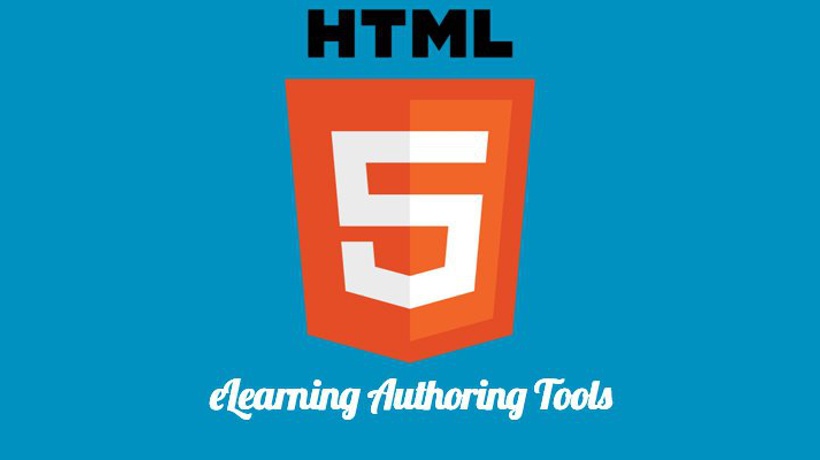Finding An eLearning Authoring Tool That Fits Into Your Development Needs
Online course delivery reduces administrative costs, instructor requirements, classroom rentals, and allows employees to complete training on their own schedule. In short, online courses can help save your organization significant time and money when training new workers, renewing compliance for regulated industries or implementing an employee development plan.
But, like with any new system, these savings come at an initial cost. Course development takes time, learning curves are flexible and frequently depend on a variety of factors, including course material, technical requirements, and the time required to train staff in course creation and administration.
While it is possible to push all of these concerns on a Learning Management System provider, many companies choose to undertake the task of course development on their own, and for good reason—new eLearning authoring tools are making the task more efficient and user friendly every day.
In order to properly navigate the technical side of online course development and select an eLearning authoring tool that fits your business, it’s important to understand your course requirements and a few things about where eLearning authoring tools sit in the eLearning family tree, what they do and, most importantly, how they interact with other programs and file formats.
What is an eLearning Authoring Tool?
The term ‘authoring tool,’ like most popular terminology in the digital world, has more than one meaning. Technically, eLearning authoring tools encompass a wide variety of software programs designed to manipulate files and raw content to produce a final product, usually a specific file type that can be read and interpreted by other programs. In this case we are referring to an eLearning authoring tool for rapid course development.
When we imagine eLearning authoring tools simply as programs designed to output files for consumption, it’s important to envision a spectrum of different program capabilities. Some eLearning authoring tools are extremely difficult to use, yet are so versatile and robust that they allow for the creation of simulations (aircraft, trucking) and game elements for the purpose of training. Other tools are quite easy to pick up, but are merely designed to display information. This same balance exists within commercially available eLearning authoring tools, like Adobe Captivate, Articulate Storyline and Lectora, which are software programs designed, specifically, for online course development and the creation of eLearning modules for training and education purposes.
When selecting an eLearning authoring tool, it’s important to know, early on in the process, what course customization will be necessary within the confines of your training program. Do you use video? Are courses updated frequently? What devices are employees using to access material? Do you need testing and evaluation? What file types work well with your internal computer systems and the systems of your business partners and clients? Does the provider you’re selecting output files in a common file format, like Flash or HTML5?
Course Delivery
Course delivery and file output are two of the most important factors to consider when selecting an authoring system. It’s important to select a tool that outputs course modules that are legible across a variety of Internet browsers (Firefox, Chrome, Explorer, etc.) and operating systems (Mac, PC) to make sure your courses are accessible to all users. HTML5 is becoming a popular output format and is rapidly assuming market share over Flash (SWF files) for a number of reasons, some of which are unrelated to online course development, but all of which are playing a factor in this industry shift.
Many legacy systems use Flash because it is easy to work with and was designed for the display of graphics and interactive elements. However, the format suffers drawbacks thanks to current trends in eLearning and web use that could not possibly have been foreseen by its creators almost two decades ago.
At the time of its creation (1996) Flash spurred a revolution in web-based graphic content, allowing for the creation of games, the proliferation of online ads and a host of other graphic uses. But while video and graphics are easily understood by people, they are notoriously hard for computers to analyze. For this reason, flash elements are hard for search engines to find and catalogue. Much of the information contained in them is only visible to human eyes, meaning that without supplementary tags and information that content will actually hurt your webpages search engine ranking. While this alone would be enough to reduce consumer confidence in Flash, it also has problems being displayed on mobile devices and is difficult to edit once content has been finalized. Although a small portion of users access online learning information with mobile devices (19% via smartphone and 25% via tablet, according to a recent Software Advice survey), mobile requirements still shape the industry and are helping drive the shift to HTML5 as an output format.
Most eLearning authoring tools allow for output in HTML5 and Flash, but some still have difficulty understanding and editing flash resources once created. It’s important to select a system that gives you the choice of both for the sake of versatility. This will allow you to reformat older learning resources, produce fresh content and keep up with potential shifts in format popularity, giving you the mobile friendly features of HTML5 with easy-to-produce graphics of Flash.
Interface and User Environment
Users' needs (both for course designers and those taking the course) are highly variable depending what your online training program is designed to accomplish. Some course developers require a great deal of gamification and interactive elements, while others only require user access to spreadsheets information using a variety of Internet browsers.
From the course designer perspective, it’s important to know the features of what program you’re working with. Do you require interactive elements? What about quizzes or evaluation tools? If you need to display video, what file formats are permissible? Many eLearning authoring tools now allow you to embed online video content, saving the hassle of uploading and management, but for every solution a new problem presents itself. It’s important to have clearly defined course objectives and a full audit of all training content and requirements.
It’s also important to make sure you’re not investing in features you won’t need later. Many popular eLearning authoring tools (Adobe Captivate, Articulate Storyline, Lectora, etc.) have begun to experiment with social media interaction and posting. Most companies, though, don’t require complex features like interaction with social media platforms, and who’s to know what social media sites will be popular a year from now? Knowing your system requirements and the level of employee interaction necessary to accomplish your learning objectives can help you get the features you need and avoid needless investments.
Course Design and Templates
Layout design plays second fiddle to a lot of the technical requirements when it comes to course development, but having the necessary features in a user-friendly interface will still affect your final purchase decision. Again, knowing your content and the user experience you want to deliver plays a big part in this process.
Many eLearning authoring tools offer advanced features like storyboarding that showcase courses as they take shape, allowing designers to sync audio and place video when needed. If your courses have a lot of media components and a strong narrative, these features can help course designers achieve a desired learning experience.
The most important cost-saving component of course design research is the availability of templates. Course templates allow users to drop content into ready-made design shells that speed up production. While technical requirements like output format won’t make much of a difference to the end user, templates and design elements make up the visual components of a course and can affect the way trainees and staff perceive your organization and the way they retain information. Be sure to check any eLearning authoring tool’s course template library well in advance to see which designs you find aesthetically pleasing and check for navigation issues.
Cost and Maintenance
The last component in eLearning authoring tool selection is cost of maintenance. Here the scope of what eLearning authoring tool you’ve selected comes back into play, as more complex tools require more training to master and traditionally cost more to purchase. Use product demos to determine tool difficulty and form accurate estimates for the necessary time and staff investments that will stem from your purchase.
Research how your course material will be consumed. Many eLearning authoring tools, while they do allow for display on mobile devices, don’t feature responsive/scalable design and require additional work to format for different screen sizes.
Shelf life doesn’t just apply to the file type output and media you’re putting into courses. Research your provider. Are they a company with a long history of customer satisfaction? Do they have a well-entrenched customer support department or will you be on your own when trouble arises? Authoring tools are frequently updated to keep pace with industry trends and whatever tool you’re purchasing might not last long without external support. The big question is, does the organization you’re investing in have the longevity you plan on getting out of the system you are purchasing? If not, you may be creating more work for your company than you end up avoiding. All of these factors will help create a sustainable course development plan that will stand the test of time.









